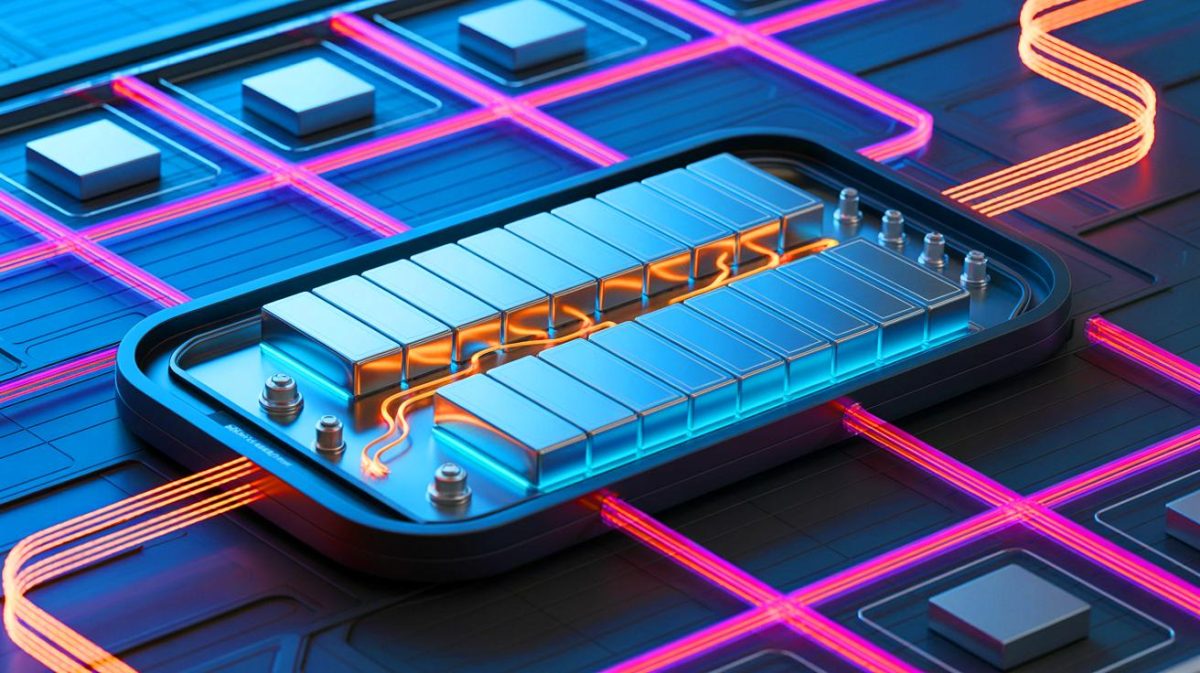| IN A NUTSHELL |
|
In the ever-evolving field of technology, the quest for better energy storage solutions is paramount. Recently, a groundbreaking study has unveiled a novel approach that could revolutionize the way we perceive energy storage systems. Researchers have focused on enhancing the energy density of lithium-ion batteries (LIBs) by tackling the unstable interfaces between electrodes and electrolytes. This innovative method holds the promise of doubling the energy capacity of these cells, offering substantial improvements over traditional systems. As we delve deeper into this exciting development, it’s clear that this could pave the way for the next generation of energy storage devices, transforming industries reliant on efficient battery technology.
Overcoming Silicon’s Volume Expansion Challenge
While silicon-based batteries are heralded for their potential to store nearly ten times more lithium ions than their graphite counterparts, they come with significant challenges. Chief among these is silicon’s dramatic volume expansion and contraction during charge and discharge cycles. This swelling, which can reach up to three times the original size, creates mechanical gaps between the electrode and the electrolyte, leading to a rapid decline in battery performance.
To address this, researchers have explored the replacement of liquid electrolytes with solid or quasi-solid-state electrolytes (QSSEs). These alternatives promise improved safety and stability. However, they still face difficulties in maintaining contact with the ever-expanding and contracting silicon, which can result in separation and subsequent performance loss over time. This ongoing challenge highlights the complexity of developing next-generation battery materials that can withstand the mechanical stresses of repeated use.
Advancements in Energy Storage Systems
Professor Soojin Park of POSTECH, a key figure in this research, asserts that this study marks a significant step toward the future of energy storage systems. By forming covalent chemical bonds between electrodes and electrolytes, the research team from POSTECH and Sogang University has developed an innovative Interlocking Electrode–Electrolyte (IEE) system. This approach chemically binds the components together, ensuring they remain connected even under severe mechanical stress, akin to bricks held by hardened mortar.
This breakthrough could accelerate the commercialization of silicon-based batteries by enhancing interfacial stability, as emphasized by Professor Jaegeon Ryu of Sogang University. The IEE strategy not only promises to overcome existing limitations but also paves the way for more durable and efficient battery systems that meet the demands of high energy density and long-term durability.
Impressive Electrochemical Performance
The electrochemical performance tests conducted on the IEE-based batteries revealed remarkable results. Unlike traditional batteries, which often lose capacity after a few charge-discharge cycles, the IEE design maintained stability over extended periods. Notably, the IEE-based pouch cell achieved an energy density of 403.7 Wh/kg and 1300 Wh/L, representing a substantial increase in both gravimetric and volumetric energy densities compared to standard commercial LIBs.
For consumers, this translates to longer-lasting smartphone batteries and electric vehicles that can travel further distances on a single charge. Such advancements in battery technology hold the potential to significantly impact various sectors, from consumer electronics to automotive industries, bringing tangible benefits to everyday life.
Key Technical Insights
The IEE system’s success lies in its ability to establish a robust, interconnected network that maintains stable electrode-electrolyte contact. By leveraging covalent crosslinking between acrylate-functionalized interlocking binders and crosslinkers within the QSSE, the research addresses the shortcomings of traditional liquid electrolyte configurations. This approach is evidenced by low voltage hysteresis and stable interfacial resistance over 200 cycles, coupled with the absence of void formation.
Further validation is provided by pressure-detecting cell kits, which confirm that the IEE system experiences lower pressure changes during cycling without voltage fluctuations from contact loss. This level of stability and performance positions the IEE system as a promising candidate for future energy storage solutions, as detailed in the journal Advanced Science.
As this innovative research continues to unfold, the implications for energy storage technology are vast and promising. The potential for silicon-based batteries to replace existing systems and offer enhanced performance is becoming increasingly tangible. However, how will industries adapt to these advancements, and what new opportunities will arise as a result of this significant leap in battery technology?
Did you like it? 4.5/5 (23)






Wow, doubling battery power by 60% is quite the achievement! Does this mean I can finally drive my EV across the country without stopping every few hours? 😄
Interesting read, but I’m curious how this affects the cost of production for these new batteries.
Great news for EV lovers! What does this mean for the environment in terms of reduced emissions?
So, when can we expect to see these high-range electric vehicles on the market? Can’t wait! 🚗
Did they mention any potential drawbacks or challenges with these interlocked electrodes?
This sounds promising, but how long until this technology becomes mainstream?
Is this innovation applicable to all types of electric vehicles, or just specific models?
Finally, some good news in battery tech! Thank you, scientists! 🙌
Not sure I understand the whole interlocked electrode thing, but if it means better batteries, I’m in!